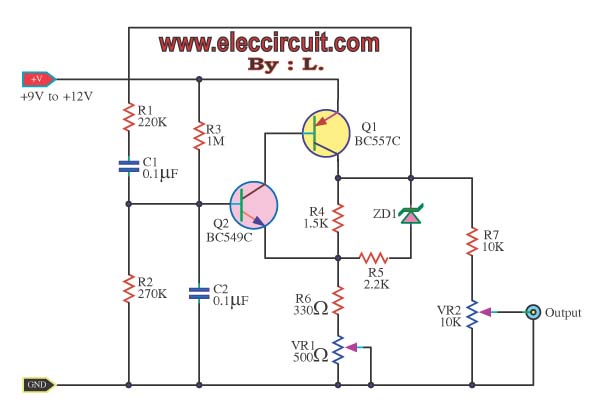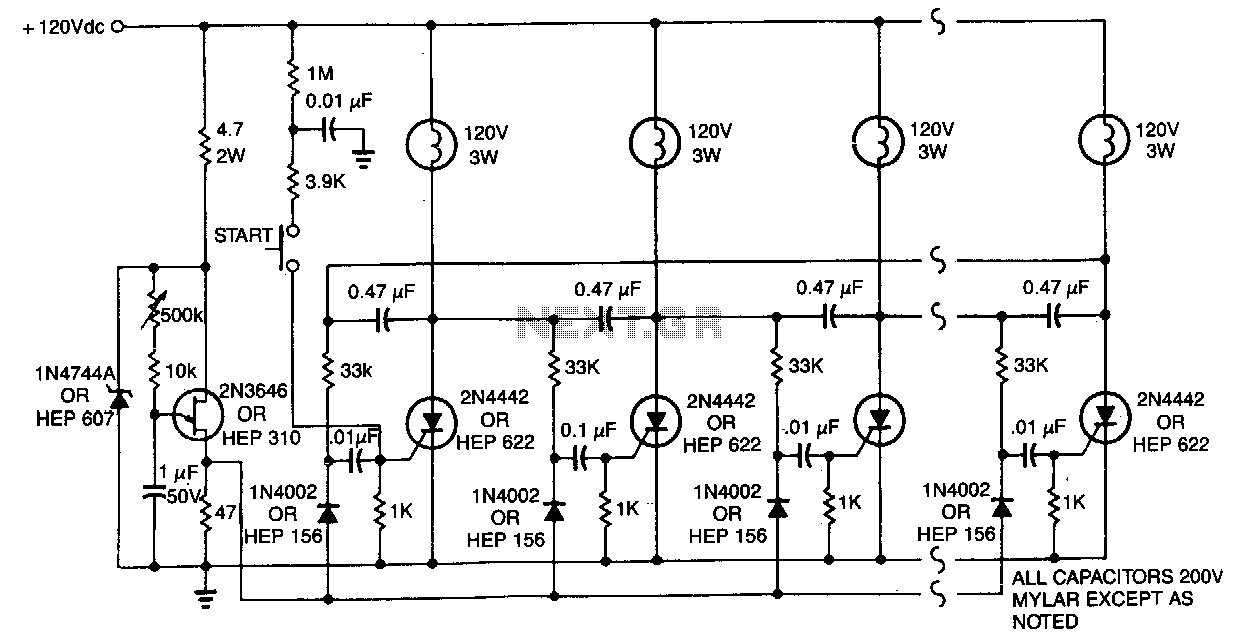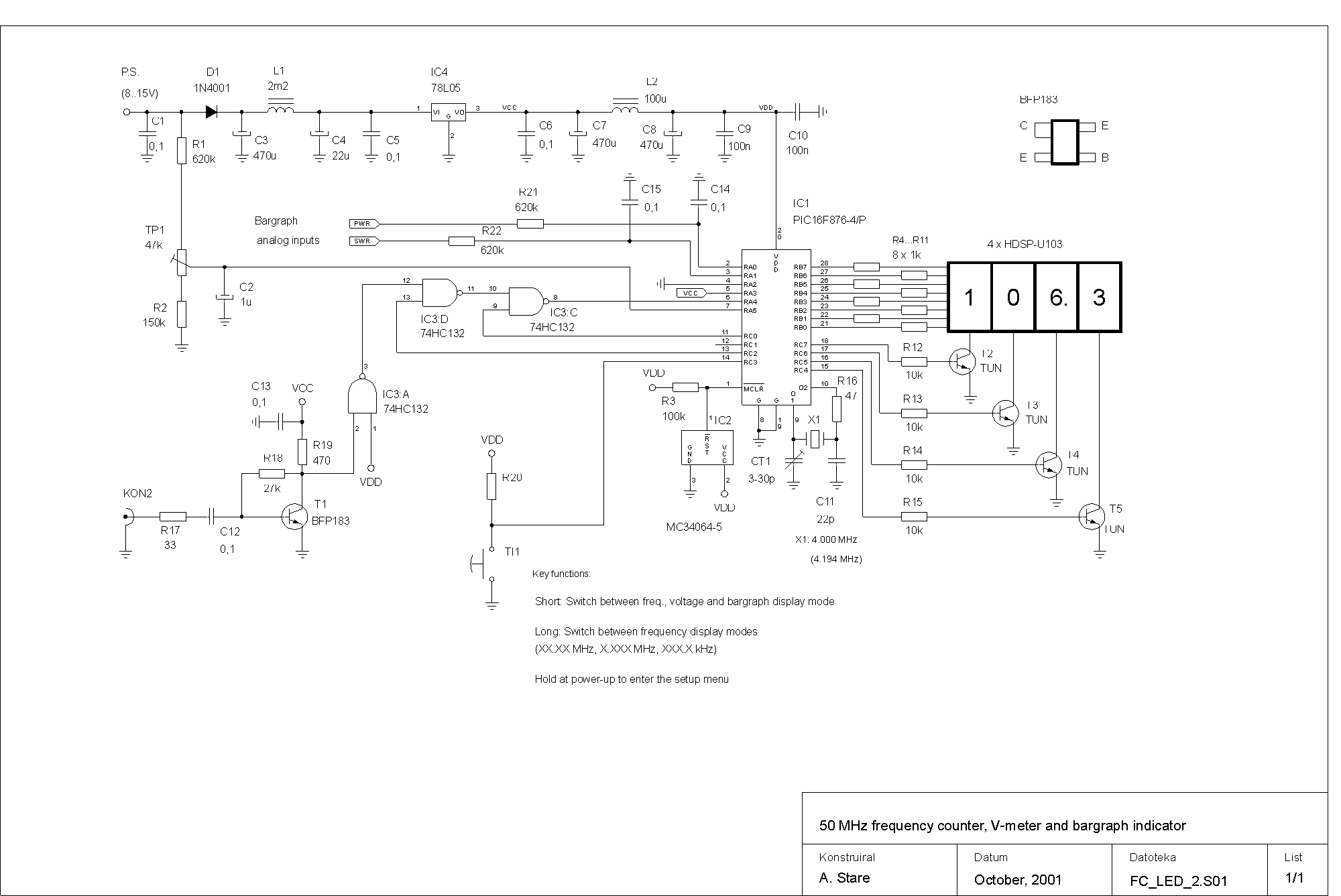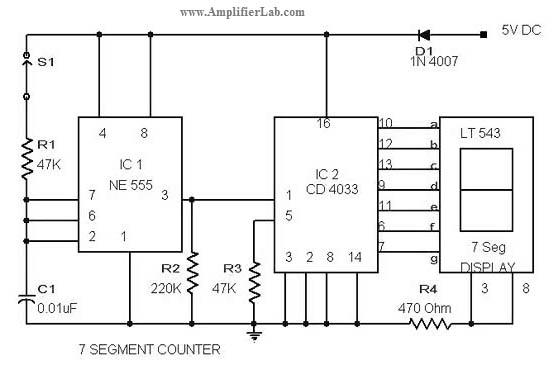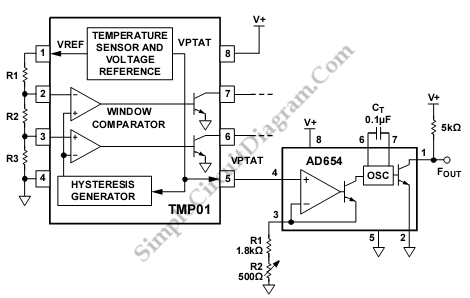
FREQUENCY COUNTER

Built around an Intersil 7216 frequency-counter IC, this counter features a basic frequency range of 10 MHz, complemented by a 100-MHz prescaler and an additional frequency divider (IC3). This divider further extends the counting range by dividing the frequency by an extra factor, as indicated on S7 in the schematic. The display is multiplexed, utilizing MAN6710 2-digit red common anode 7-segment LED displays in the prototype.
The frequency counter circuit operates primarily with the Intersil 7216 IC, which is designed for high-speed frequency measurement. The basic operational range of 10 MHz allows for the counting of input frequencies with high precision. To accommodate higher frequency signals, a prescaler is implemented, allowing the circuit to effectively handle frequencies up to 100 MHz.
The additional frequency divider (IC3) plays a crucial role in extending the counting capabilities of the counter. By dividing the incoming frequency by a specified factor, as denoted on S7 in the schematic, the circuit can measure even higher frequencies beyond the initial range. This feature is particularly useful in applications where signal frequencies exceed the standard operating range of the frequency counter.
The multiplexed display system employs MAN6710 2-digit red common anode 7-segment LED displays, which provide a clear and readable output for the frequency measurements. The multiplexing technique allows for efficient use of the display segments, reducing the number of required I/O pins and enabling the display of two digits simultaneously. The common anode configuration simplifies the control of the segments, as the anodes are connected together, and the individual segments are turned on by grounding the corresponding cathodes.
Overall, this frequency counter design combines high-frequency measurement capabilities with an efficient display system, making it suitable for various applications in electronics and communications where accurate frequency counting is essential.Built around an Intersil 7216 frequency-counter IC, this counter has a basic range of 10 MHz, a 100-MHz prescaler, and an extra frequency divider (IC3). This divider divides `oy an extra factor, as marked on S7 (see schematic), to extend the range of the counten The display is multiplexed.
MAN6710 2-digit red common anode 7-segment LED displays we re used on the prototype. 🔗 External reference
The frequency counter circuit operates primarily with the Intersil 7216 IC, which is designed for high-speed frequency measurement. The basic operational range of 10 MHz allows for the counting of input frequencies with high precision. To accommodate higher frequency signals, a prescaler is implemented, allowing the circuit to effectively handle frequencies up to 100 MHz.
The additional frequency divider (IC3) plays a crucial role in extending the counting capabilities of the counter. By dividing the incoming frequency by a specified factor, as denoted on S7 in the schematic, the circuit can measure even higher frequencies beyond the initial range. This feature is particularly useful in applications where signal frequencies exceed the standard operating range of the frequency counter.
The multiplexed display system employs MAN6710 2-digit red common anode 7-segment LED displays, which provide a clear and readable output for the frequency measurements. The multiplexing technique allows for efficient use of the display segments, reducing the number of required I/O pins and enabling the display of two digits simultaneously. The common anode configuration simplifies the control of the segments, as the anodes are connected together, and the individual segments are turned on by grounding the corresponding cathodes.
Overall, this frequency counter design combines high-frequency measurement capabilities with an efficient display system, making it suitable for various applications in electronics and communications where accurate frequency counting is essential.Built around an Intersil 7216 frequency-counter IC, this counter has a basic range of 10 MHz, a 100-MHz prescaler, and an extra frequency divider (IC3). This divider divides `oy an extra factor, as marked on S7 (see schematic), to extend the range of the counten The display is multiplexed.
MAN6710 2-digit red common anode 7-segment LED displays we re used on the prototype. 🔗 External reference
